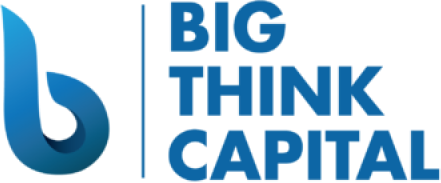Understanding the Impact of Recent Federal Interest Rates on Diverse Small Business Funding Strategies
Estimated Reading Time: 5 minutes
- Consider the impact of rising interest rates on your funding options.
- Planning is critical for applying for SBA loans given lengthy approval times.
- Evaluate leasing versus purchasing for equipment to maintain cash flow.
- Monitor credit utilization on business lines to safeguard your credit score.
- Explore diverse funding solutions to navigate evolving economic conditions.
- The Current Landscape of Federal Interest Rates
- Working Capital Advances
- SBA Loans
- Equipment Financing
- Merchant Cash Advances (MCAs)
- Business Credit Lines
- Conclusion
- FAQ
The Current Landscape of Federal Interest Rates
As of early 2025, the Federal Reserve has continued its strategy of adjusting interest rates in an effort to combat inflation and stabilize the economy. Since the onset of the pandemic, interest rates have experienced unprecedented shifts, prompting many business owners to reevaluate their financing strategies.
Recent actions, including rate hikes, have aimed to control inflation; however, these decisions also affect the cost of borrowing. The most recent Federal Open Market Committee (FOMC) meeting highlighted a steady interest rate of 5.25% as officials indicated a cautious approach to further hikes based on economic indicators (source: Federal Reserve).
This context is critical for small business owners as it impacts various funding avenues. Let’s examine how these changes affect different types of small business financing options.
Working Capital Advances
Working capital advances (WCAs) provide businesses with quick access to funds, allowing them to cover day-to-day operational costs. Unlike traditional loans, WCAs are based on future credit card sales and have a relatively straightforward application process.
Impact of Interest Rates on WCAs
In an environment of rising interest rates, the cost of obtaining a WCA can increase due to the fact that the percentage costs tend to be higher as lenders factor in the risk associated with economic uncertainty. However, they still offer the advantage of expedited funding, making them an appealing option for businesses that cannot afford long waiting periods.
Takeaway 1: If you’re considering a WCA, assess your sales forecasts meticulously. The cost may be higher, but maintaining cash flow is vital, especially during fluctuating economic conditions.
SBA Loans
Small Business Administration (SBA) loans are often regarded as the gold standard in small business financing due to their favorable terms, lower interest rates, and longer repayment periods. However, they can also involve longer application processes, which might be a disadvantage in urgent situations.
The Effect of Interest Rates on SBA Loans
With rising federal interest rates, current SBA interest rates have also seen adjustments. As of 2025, SBA Standard 7(a) loan rates hover around 8.5% to 10%—a slight increase from previous years. This shift means small business owners should carefully calculate the overall costs of borrowing, including interest and associated fees.
Takeaway 2: Planning is key when applying for an SBA loan. Given the lengthy approval process, potential borrowers should consider submitting their applications promptly to minimize the impact of rising rates.
Equipment Financing
For many small businesses, purchasing or leasing equipment is a substantial investment that significantly influences operational efficiency. Equipment financing allows businesses to obtain essential machinery, tools, and technology without straining their cash flow.
How Interest Rates Influence Equipment Financing
As interest rates rise, financing terms for acquiring equipment may also tighten. Traditionally, equipment financing rates are influenced by the larger economic climate; however, they often remain competitive as lenders want to promote growth. Current equipment financing rates are approximately 7% to 9% for well-qualified borrowers in the current market.
However, in a high-rate environment, there is a growing trend toward leasing rather than purchasing. Leasing can allow businesses to use critical equipment without immediately incurring substantial debt.
Takeaway 3: Evaluate leasing versus purchasing when considering equipment investments. Leasing may provide flexibility and lower initial costs, making it an attractive option for budget-conscious business owners.
Merchant Cash Advances (MCAs)
Merchant cash advances allow business owners to borrow against future sales, providing quick access to funds; however, they come with a high cost of capital. MCAs can be a double-edged sword; they are a fast solution but can lead to greater financial burdens if sales decline.
Impact of Interest Rates on MCAs
Similar to WCAs, the cost of borrowing through MCAs can rise in a high-interest rate environment, as lenders often price in risk factors such as inflation. The effective Annual Percentage Rate (APR) on MCAs can easily reach over 40%, making them less desirable.
Recommendation for Business Owners: Carefully assess your business’s ability to repay. If sales are volatile, consider alternative financing methods to avoid potential cash flow issues.
Business Credit Lines
Business lines of credit provide flexible access to funds that can help businesses manage cash flow, especially during lean periods. Business owners can draw on the funds as needed and only pay interest on the drawn amounts.
Relationship Between Interest Rates and Credit Lines
As the Federal Reserve raises rates, the interest charged on drawn amounts from lines of credit will also increase. If your business relies heavily on credit lines, ensuring a well-structured financial plan can cushion potential shocks from interest rate fluctuations.
A line of credit may also serve multiple purposes, from covering operational costs to seizing unexpected business opportunities. The advantage of having a revolving credit account is flexibility, allowing businesses to only pay interest on the amount they utilize.
Best Practices for Managing Business Credit Lines
- Regularly monitor your credit utilization to maintain a healthy credit score.
- Assess your business cash flow regularly to determine when to draw on your line of credit.
- Have a repayment plan in place considering potential rate increases.
Conclusion
The ongoing shifts in federal interest rates have considerable implications for small business funding strategies. Understanding these effects allows business owners to make informed decisions when exploring financing options such as working capital advances, SBA loans, equipment financing, MCAs, and business credit lines. With the right knowledge and preparation, you can position your business to navigate these challenges successfully and secure the funding you need to thrive in 2025.
If you are seeking assistance in understanding your funding options or securing financing suitable for your business needs, reach out to Big Think Capital today. Our experts are ready to guide you through the diverse funding landscape to help you identify the best solutions for your unique situation. Visit bigthinkcapital.com or contact us to learn more about how we can assist you on your journey to success.
FAQ
Q1: How do interest rates affect small business loans?
A1: Rising interest rates can increase the overall cost of borrowing, making loans more expensive for small businesses.
Q2: What is the best type of financing for small businesses in a high interest rate environment?
A2: It often depends on the business’s specific needs, but options such as equipment leasing or lines of credit can offer more flexibility and lower initial costs.
Q3: How can I prepare for future interest rate hikes?
A3: Business owners should regularly assess their cash flow, explore various funding options, and have a financial plan in place to adapt to changing rates.






